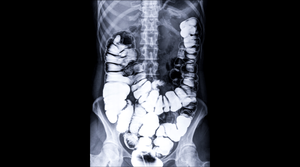A Digital Human for Medical Device Designers
January 17, 2013
Device makers may soon have a new tool in their design and prototyping process, thanks to BioDigital Systems (New York City). The company has developed an animation and visualization system that provides a 3-D view of the human body so detailed that it can be used to model a device or implant and its function within the human anatomy.
In an effort focused on developing the first noninvasive robotic ablation treatment for such cardiac arrhythmias as atrial fibrillation and ventricular tachycardia, BioDigital is working with Medtronic on a project dubbed CyberHeart. "The CyberHeart was one of our very early projects where we took real human data and were able to resurface it and attach real motion data to 3-D models," remarks company cofounder Aaron Oliker. "The outcome was the representation of a very realistic beating virtual heart."
Such realistic renditions of organs are created by culling and integrating data from a variety of sources. To create the CyberHeart, for example, the initial heart data were taken from the National Institutes of Health's Visible Human Project. The initial model was then augmented using data from such sources as CT and MRI scans. "Essentially, through various real data sources, we built out the entire human body," Oliker says. "Now we have 5000 peer-reviewed models of male and female anatomy that we distribute online through biodigitalhuman.com, an online tool offering detailed 3-D views of the human body that enables users to add and remove layers and conditions.
"If you're dealing with an implant, it's very difficult to have a three-dimensional reference," Oliker notes. "Because if you're just dealing with CT or MRI data, you're dissecting just one part of the body; you're not looking at all of the other structures that surround that part of the body." Thus, CyberHeart enables a much more holistic view of any particular structure.
The advantage of this system is that it allows device makers to look deeper into the body and see things that might not necessarily appear on scans. BioDigital also offers a service in which it can lay a virtual rendition of a device into a virtual body to demonstrate how the device would be positioned and how it could affect surrounding structures. The company can even render the entire implant process from beginning to end.
"The value added for a device manufacturer, or even an installer, is that you can really understand what the process is and can take yourself through it and demonstrate it," Oliker comments. "We can take real data and manipulate them to show error pathways. If you have enough data, we can show possible pathways that you could never demonstrate in live surgery."
While BioDigital's goal is to make its tools as accessible as possible, its technologies are meant to complement existing medical device design methods, including cadaver dissection. "Interacting with the human body and cadaver dissection is essential," Oliker says. "But it's expensive, and there are all sorts of legal issues associated with it. Moreover, dissected cadavers do not always look like the real thing." CyberHeart and other BioDigital tools are designed to augment dissections. But if dissections are not an option, these tools are the next best thing, Oliker adds.
Aaron Oliker will be speaking at MD&M West on Tuesday, February 12. His talk, "Motion Capture for the Heart: A Close Look at the CyberHeart Design Project at Medtronic," will show attendees how BioDigital creates its simulations and how real data were gathered for the CyberHeart project. He will also present examples of the BioDigital Human technology and demonstrate the work the company has performed in conjunction with Medtronic, Stryker, and other medical device manufacturers,
About the Author(s)
You May Also Like


